How to highlight numbers in Excel
You can watch a video tutorial here.
Excel has several options for formatting cells and one such option is Conditional formatting. Conditional Formatting allows you to define the format of a cell based on its value. Using conditional formatting you can set a rule to highlight numbers that meet a particular condition. Applying conditional formatting to cells is a great way to enhance a table of data by providing visual clues. You can specify a rule that can be applied to a single cell or a range of cells. The rules function based on the value in the cells and any of the following formatting can be done:
- Highlight the cells
- Apply a color scale
- Create data bars in the cells
- Add icons to the cells
In this example, we will look at the following options that let you change the cell color based on the value of the cells.
- Highlight the cells or change the color of cells that meet a condition
- Use a preset option
- Define a rule
- Apply a color scale to all cells in a range i.e. a color gradient will be applied and the color of the cell will depend on where its value falls in relation to the other cells
- Use a preset option
- Define a rule
Option 1 – Change cell color using a preset option
Step 1 – Select the cells
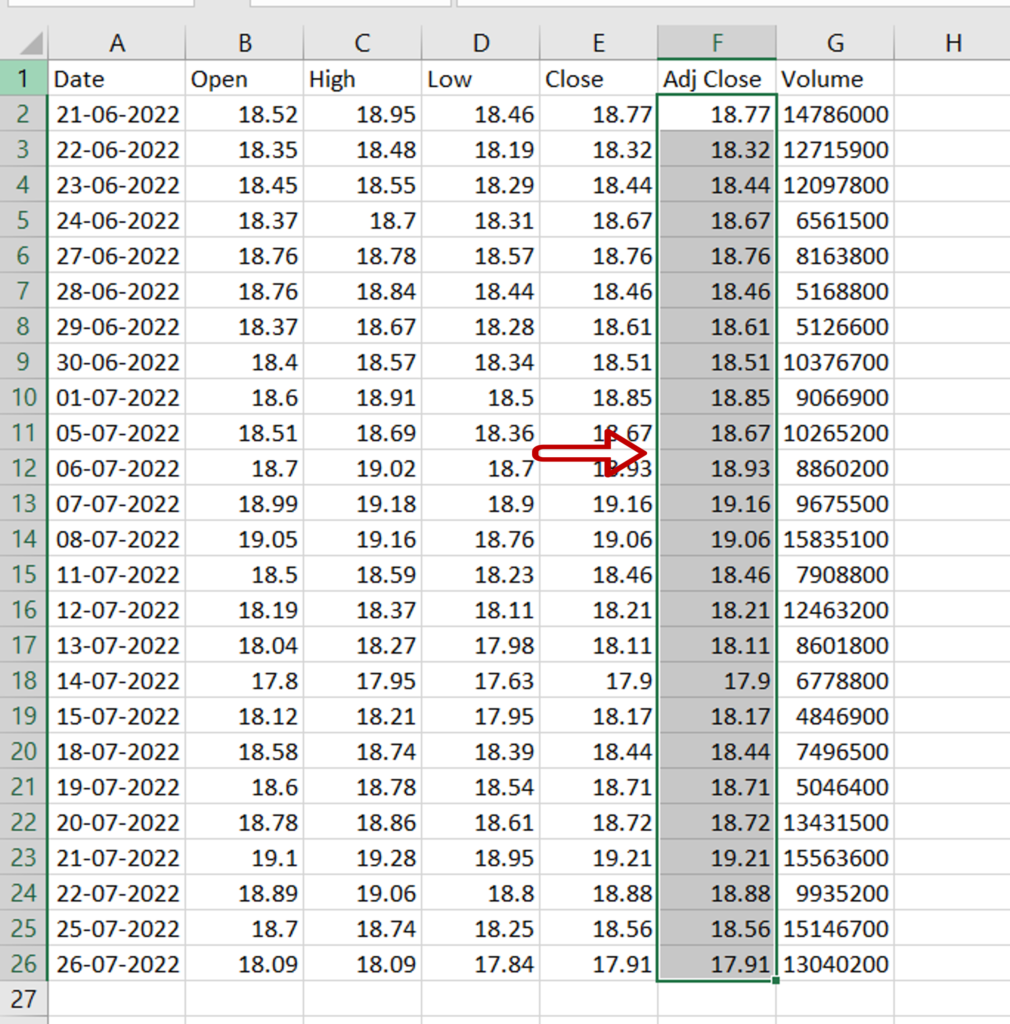
- Select the cells to be formatted
Step 2 – Choose a preset option
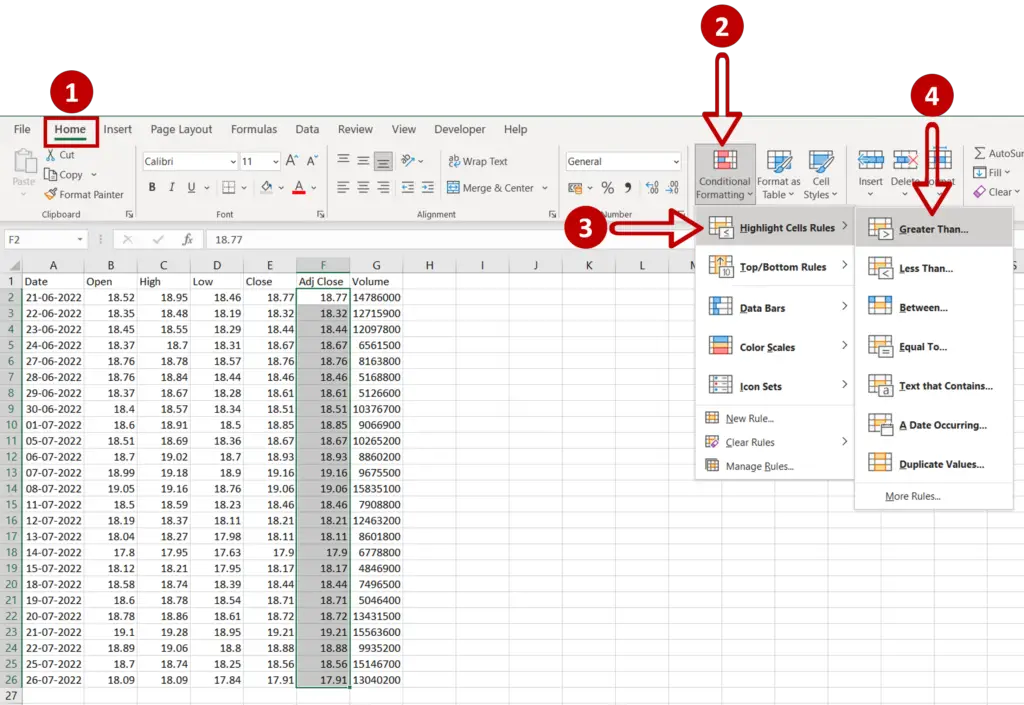
- Go to Home > Styles > Conditional Formatting
- Click on Highlight Cells Rules
- Choose Greater Than
Step 3 – Enter the value above which cells are to be highlighted
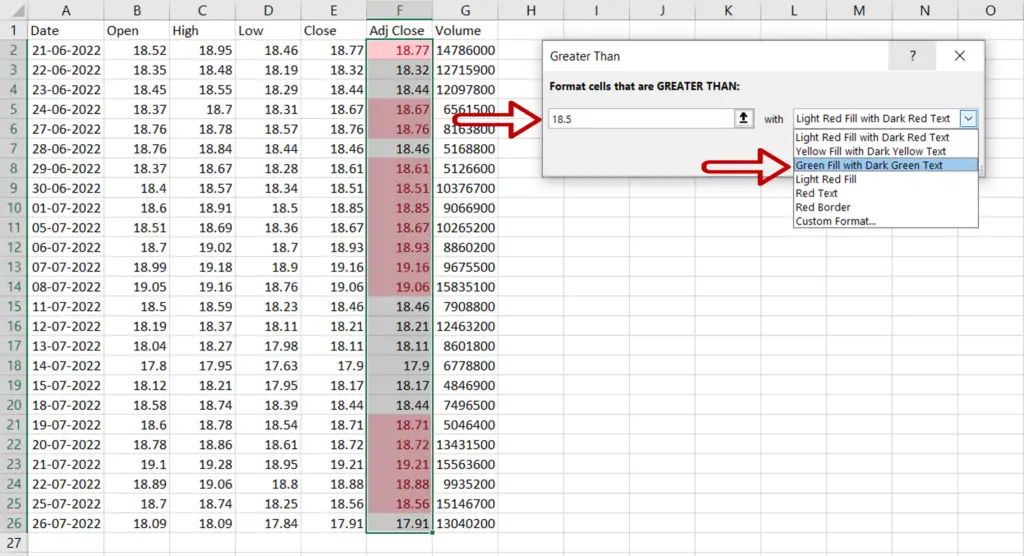
- Enter the values:
- Format cells that are GREATER THAN: 18.5
- With: Green Fill with Dark Green Text
- Click OK
Step 4 – Check the result
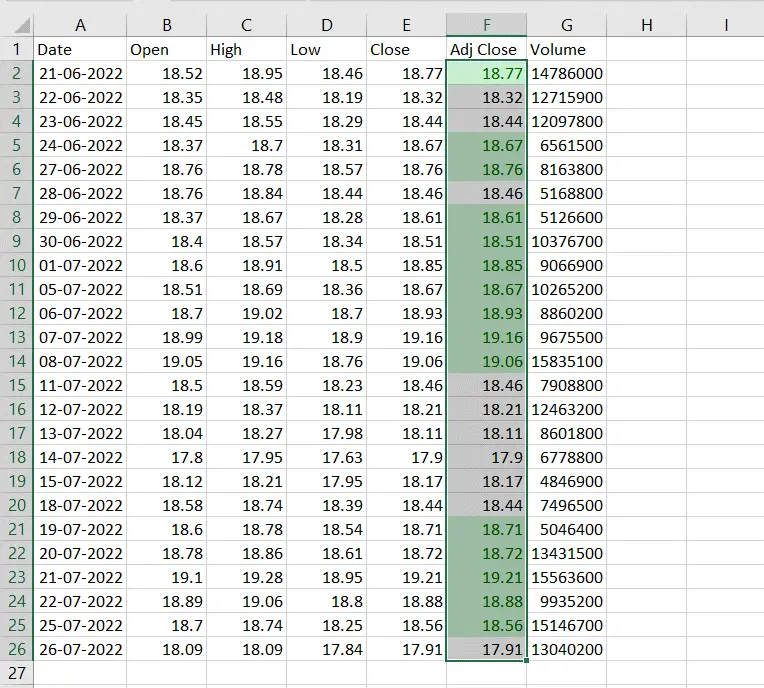
- All cells in the column that are greater than 18.5 are colored green
Option 2 – Change cell color by defining a rule
Step 1 – Select the cells
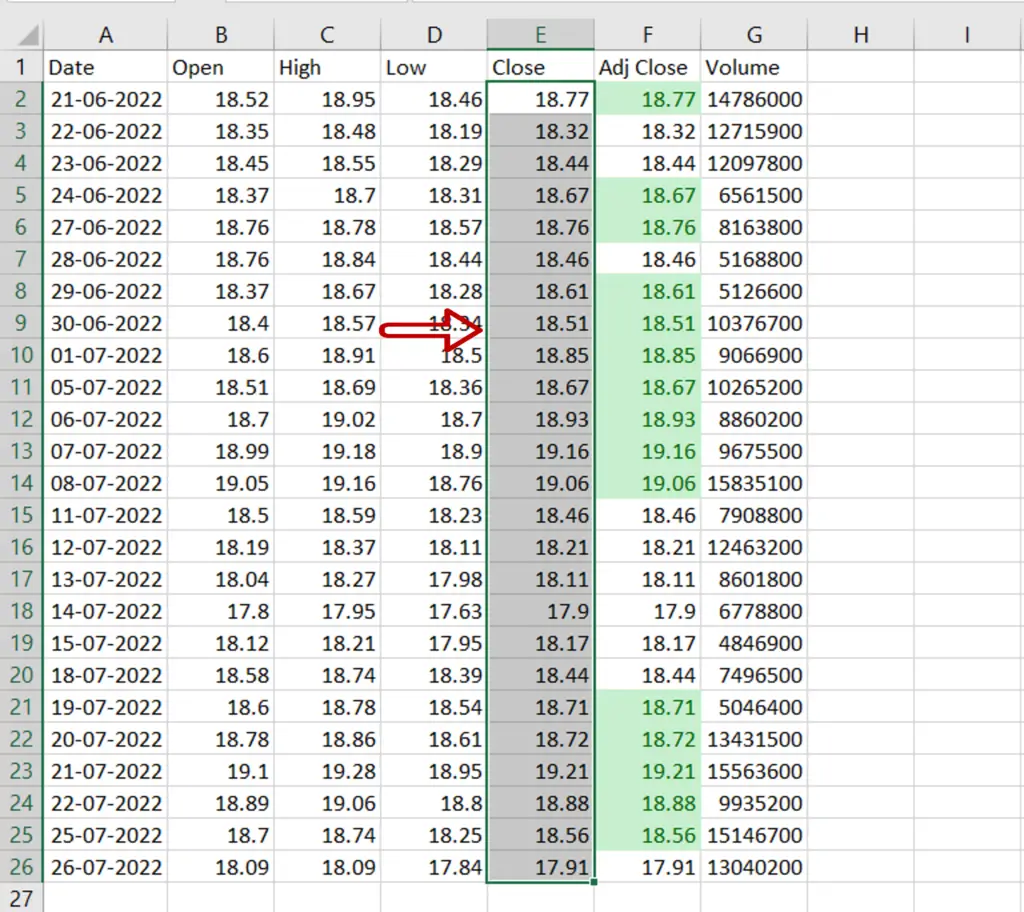
- Select the cells to be formatted
Step 2 – Open the New Formatting Rule window
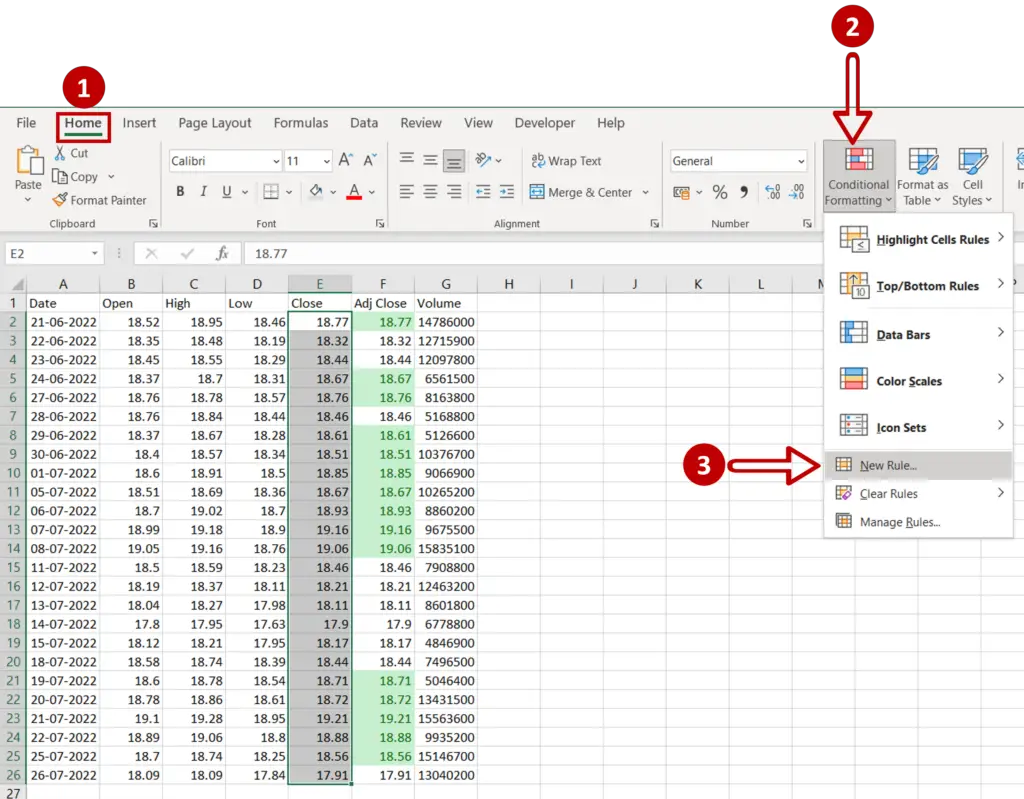
- Go to Home > Styles > Conditional Formatting
- Select New Rule
Step 3 – Set the parameters
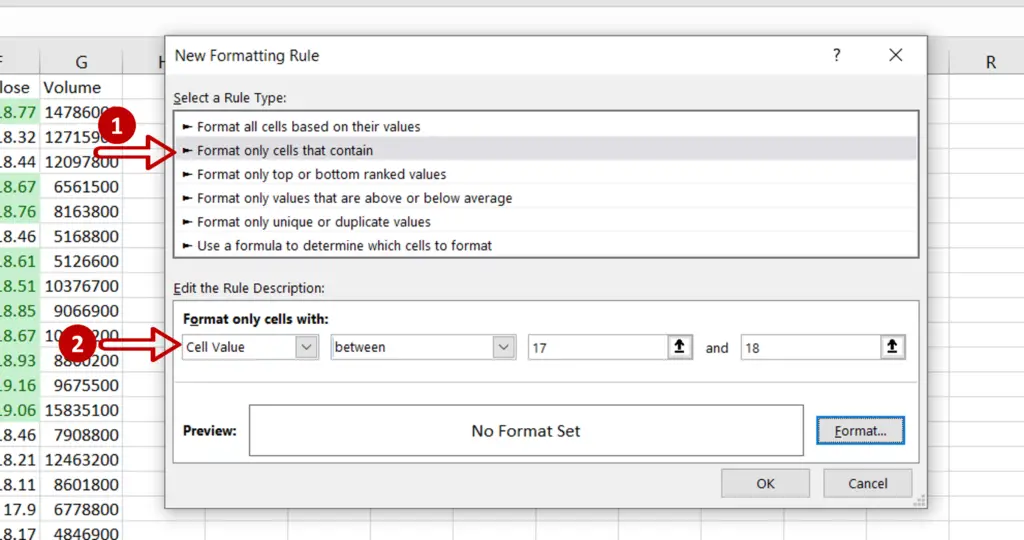
- Select Format only cells that contain
- Edit the rule description:
- Format only cells with: Cell Value, between, 17,18
- Click Format
Step 4 – Choose the fill color
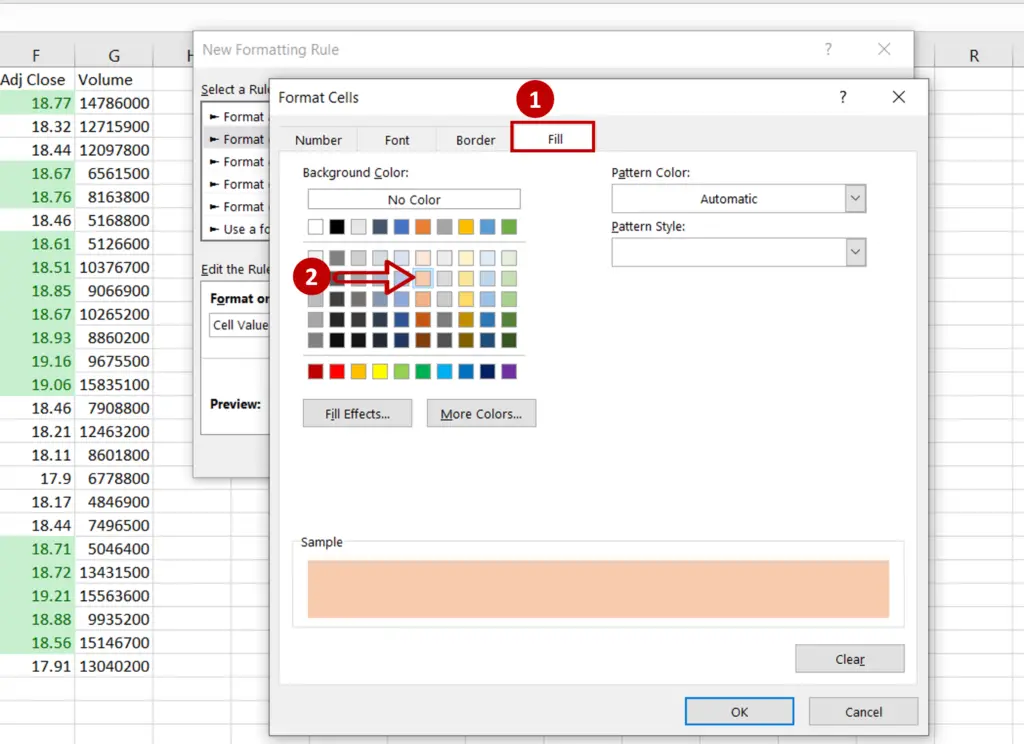
- Select the Fill tab
- Choose the color
- Click OK to close the Format Cells window
- Click OK to close the New Formatting Rule window
Step 5 – Check the result
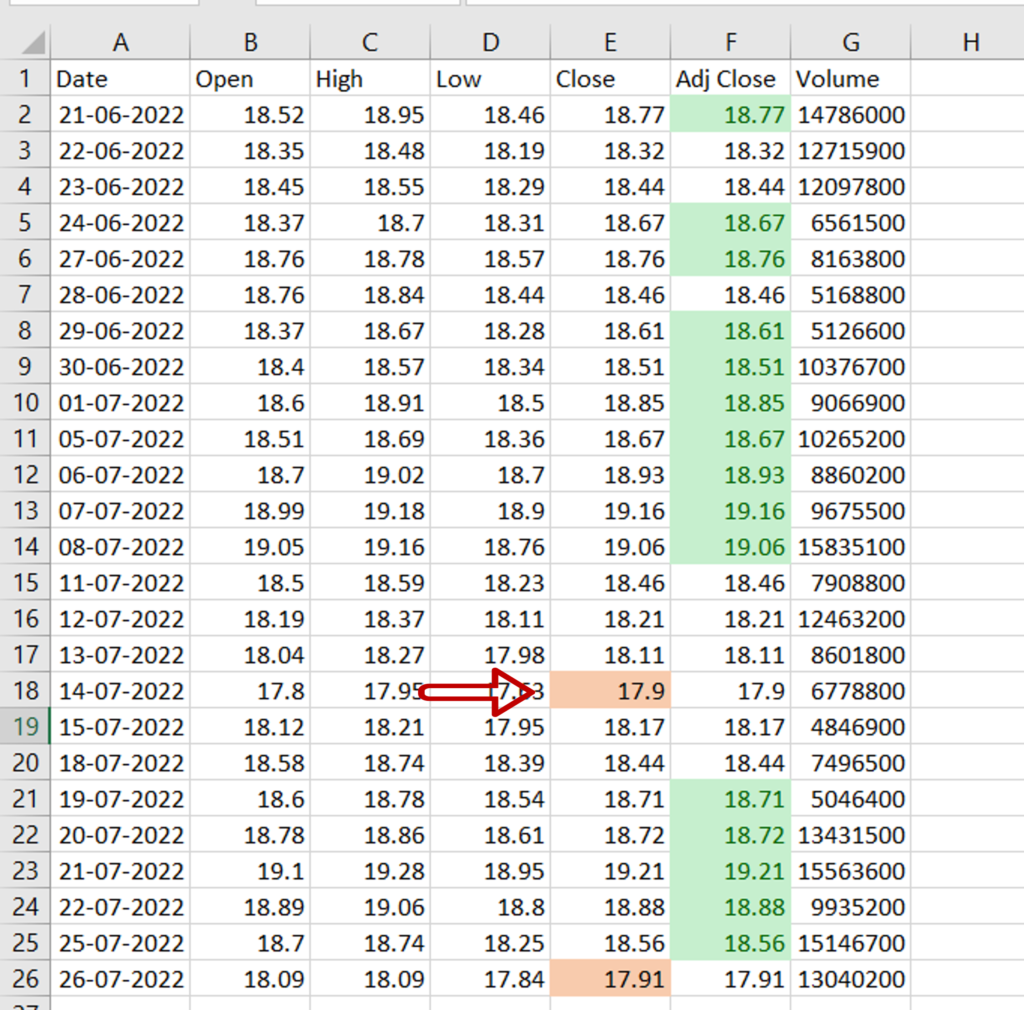
- The color has been changed of those cells whose value falls between 17 and 18
Option 3 – Apply a color scale using a preset option
Step 1 – Select the cells
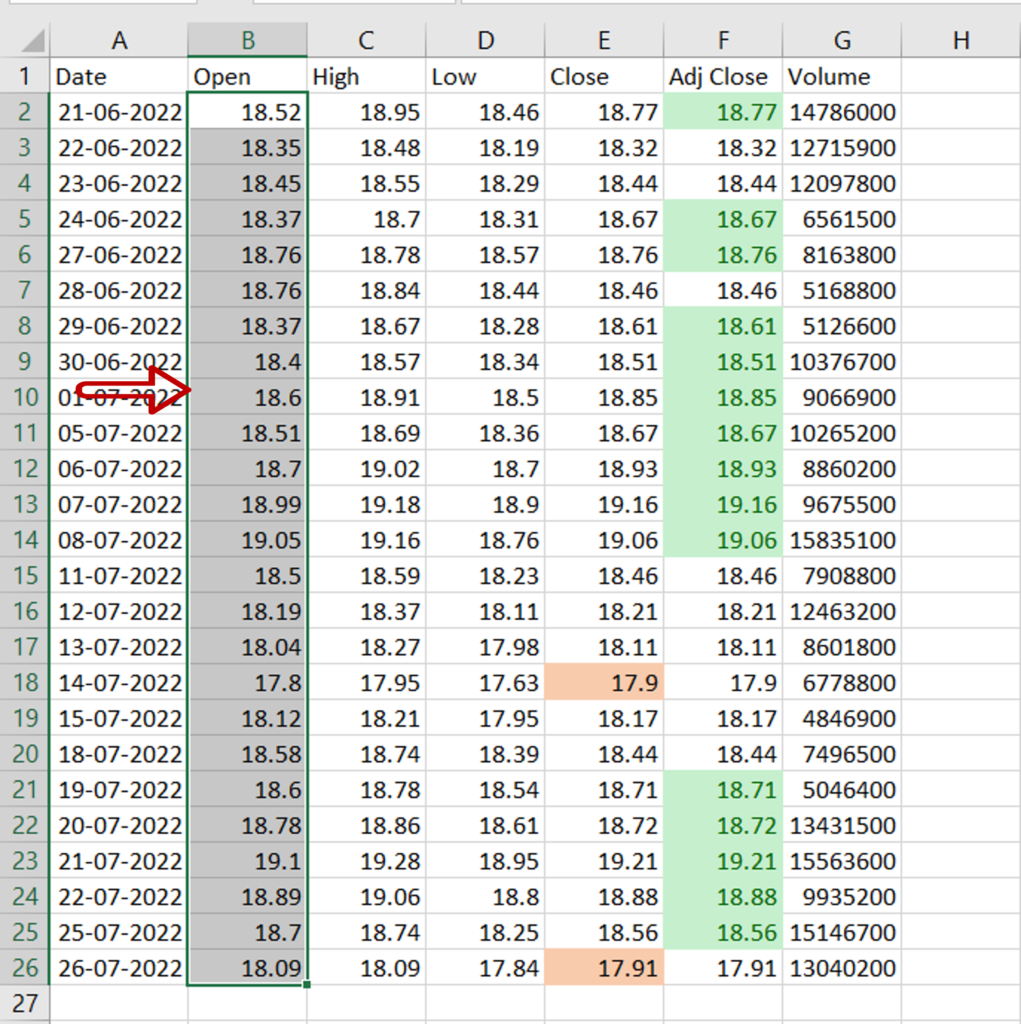
- Select the cells to be formatted
Step 2 – Choose a preset option
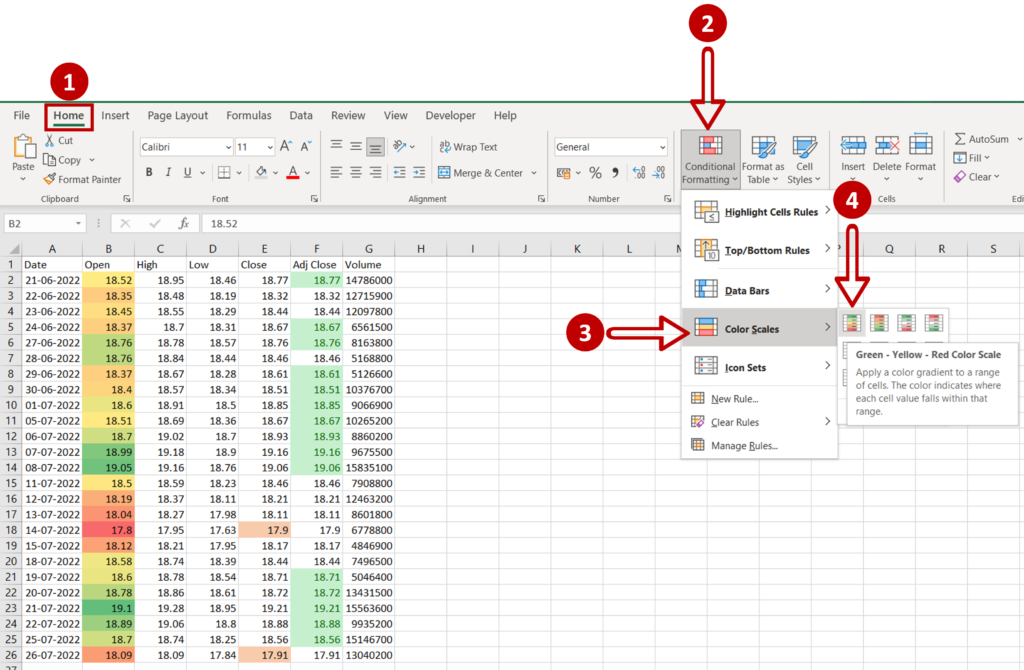
- Go to Home > Styles > Conditional Formatting
- Click on Color Scales
- Choose Green – Yellow – Red Color Scale
Step 3 – Check the result
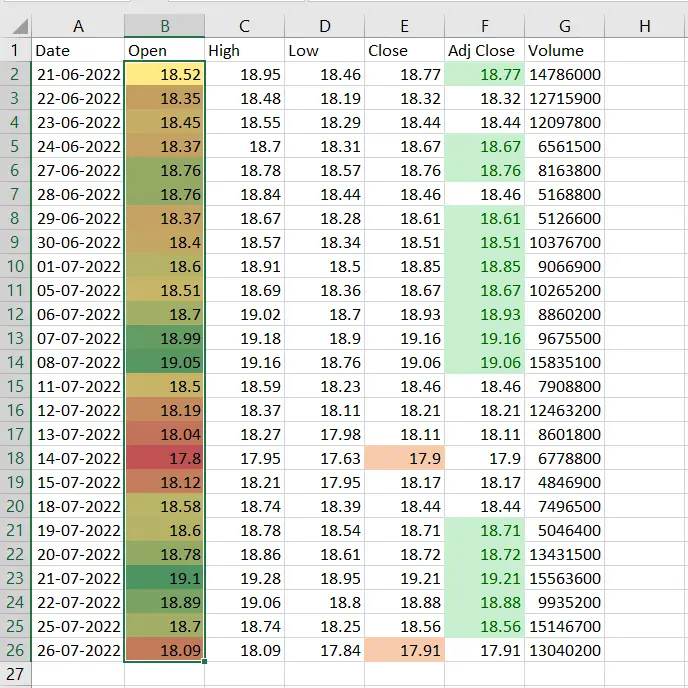
- The color gradient is applied to all the cells
- Higher values are green and lower values are red with the rest of the numbers on the color gradient in between
Option 4 – Apply a color scale by defining a rule
Step 1 – Select the cells
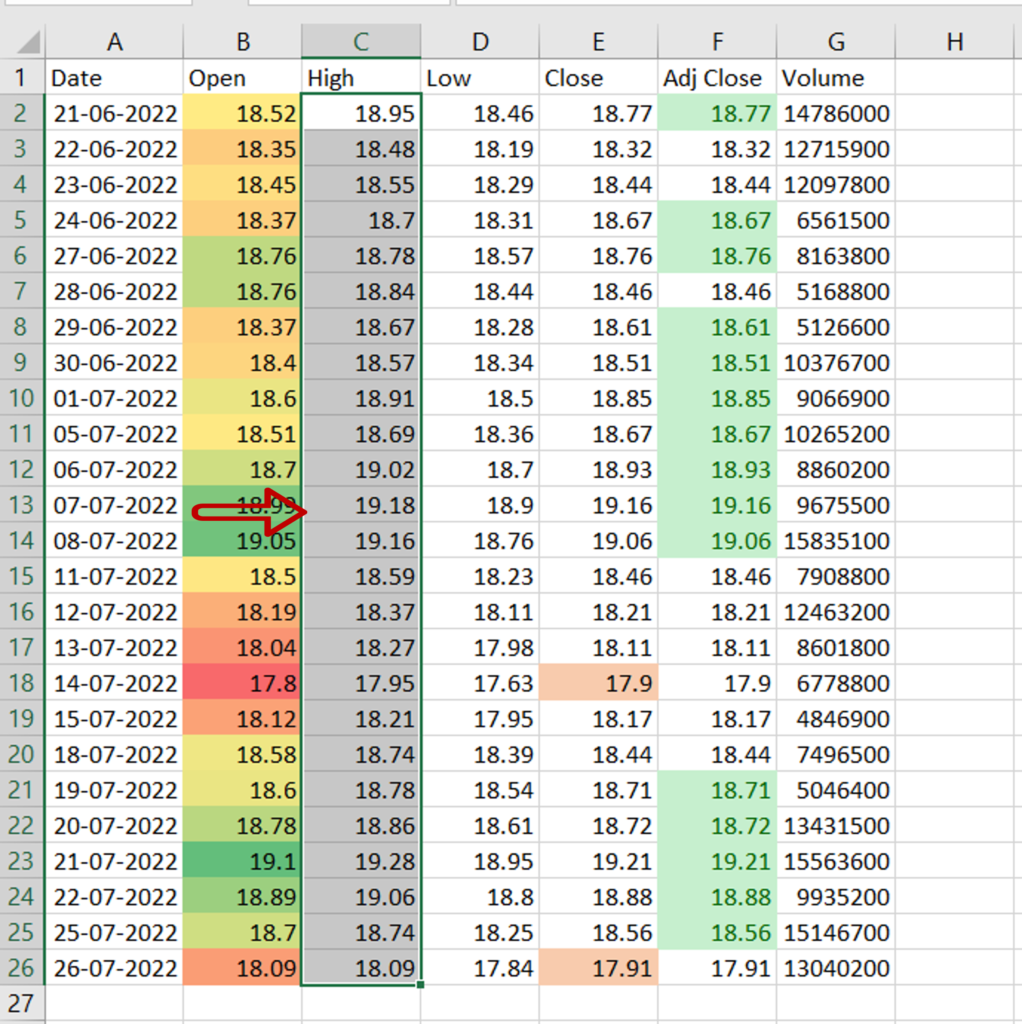
- Select the cells to be formatted
Step 2 – Open the New Formatting Rule window
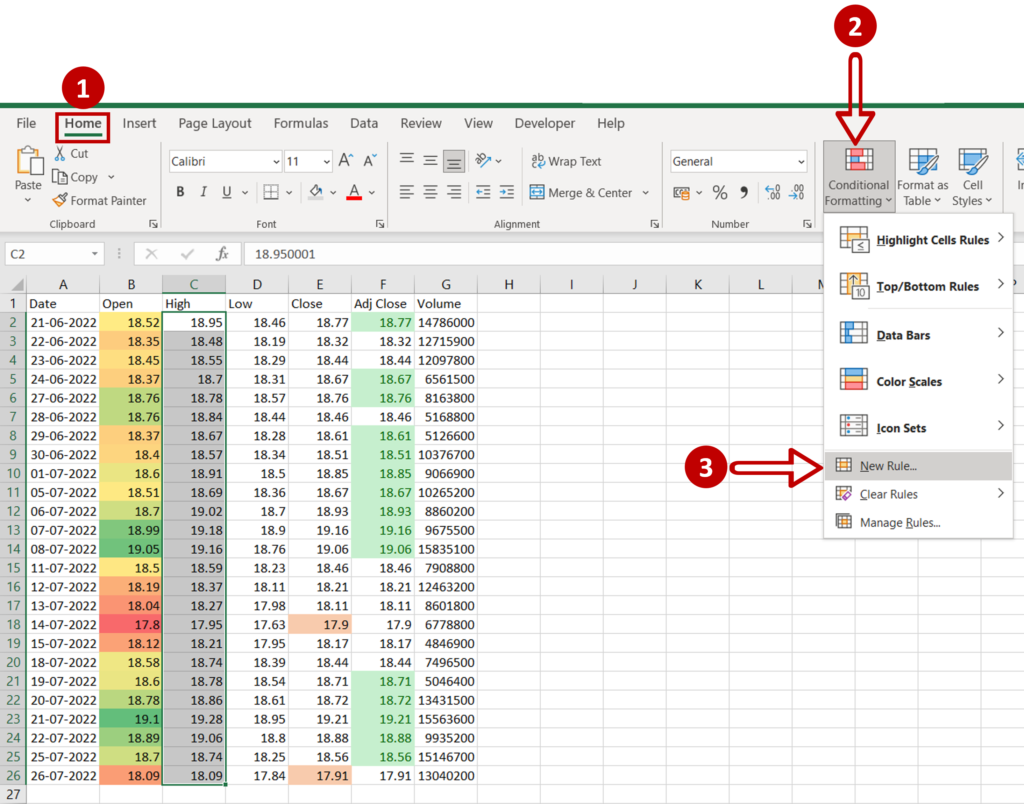
- Go to Home > Styles > Conditional Formatting
- Select New Rule
Step 3 – Set the parameters
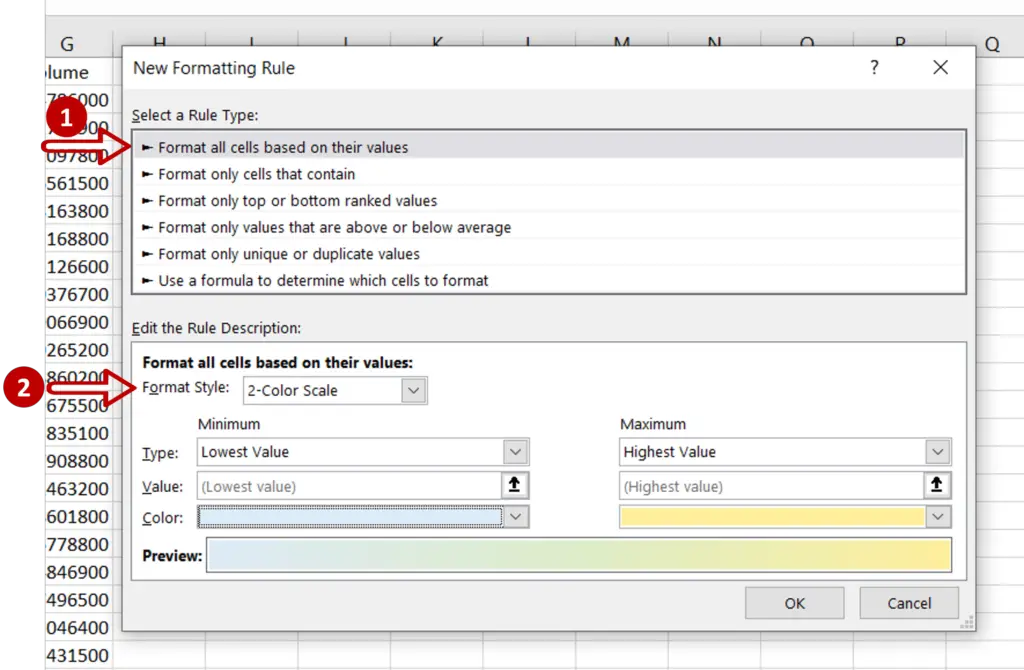
- Select Format all cells based on their values
- Under Edit the rule description:
- Format style: 2-Color Scale
- Type: Minimum = Lowest Value, Maximum = Highest Value
- Select the colors scale and choose the colors
- Click OK
Step 4 – Check the result
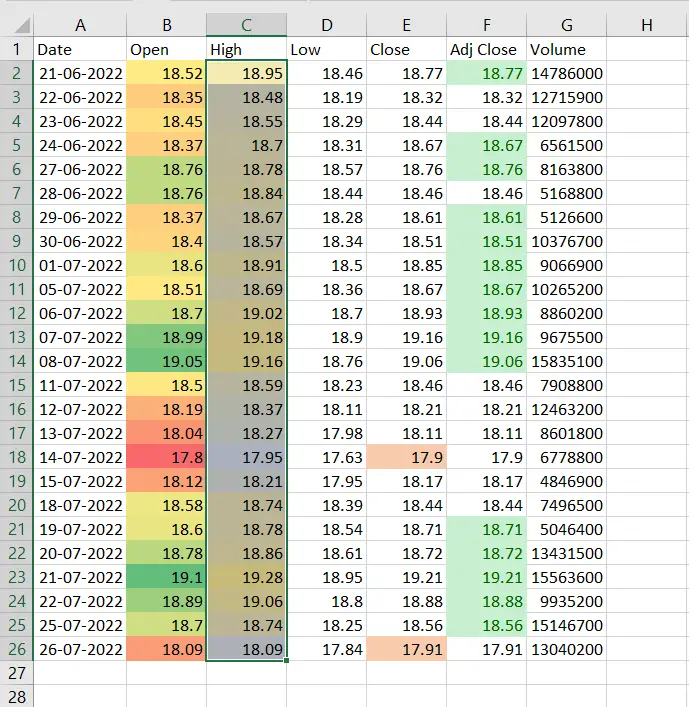
- The color gradient is applied to all the cells
- Higher values are yellow and lower values are blue with the rest of the numbers on the color gradient in between



